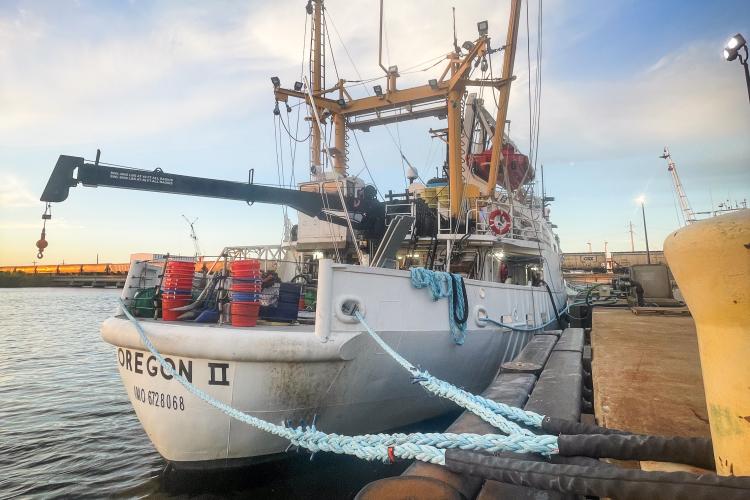About the Survey
Every year, NOAA Fisheries, in collaboration with the Southeast Area Monitoring and Assessment Program, conducts surveys of groundfish (bottom-dwelling fish and invertebrate species) in the Northern Gulf of Mexico. These research expeditions take place twice a year, during the summer and fall, covering waters from Dry Tortugas, Florida to Brownsville, Texas. Some of the most common species seen on this survey include red snapper, northern brown shrimp, Atlantic croaker, pinfish, and many others!
We have been conducting the summer survey since 1982 and the fall survey since 1986. We sample nearshore and continental shelf areas ranging from 5-60 fathoms (9-110 meters) in depth. Species abundance and distribution data from groundfish surveys are used in stock assessments of approximately 20 species, including three shrimp species (brown shrimp, white shrimp, pink shrimp), red snapper, and gray triggerfish, among others. Biological and oceanographic data are also used to monitor the health of the ecosystem in the Gulf of Mexico (e.g., coastal hypoxia).
Some of the data collected on this survey are:
- Biological: Catch composition, abundance, weight, sex and maturity
- Environmental: Air temperature, barometric pressure, surface water temperature, wind speed, and wind direction
- Water column profile: Temperature, conductivity (salinity), depth, transmissivity, dissolved oxygen concentrations, fluorometry
So why should we all care about this survey and the valuable information that it provides? Species abundance and distribution data from the groundfish (and other) surveys provide valuable inputs into the stock assessments of many managed species. These assessments are then used to inform management and policy decisions. Environmental data collected from the water column helps researchers assess the long-term health of the Gulf ecosystem, including the impacts of natural and anthropogenic disturbances.
“We’re trying to look at the overall health of the Gulf of Mexico in terms of the diversity of species,” says Alonzo Hamilton, fisheries biologist and field party chief of the fall groundfish survey. “The health of the Gulf is reflected in the critical data we gather from these organisms during the survey.”
We’ll hear more from Alonzo and go into more detail on the data collection process soon. Stay tuned!
Meet the Blogger
Hannah Shahmoradi
Hannah Shahmoradi is a communications intern with the Directorate at NOAA Fisheries’ Southeast Fisheries Science Center in Miami, Florida. Hannah earned her Bachelor of Science degree in Marine Science at the University of Maine in 2022, and is currently pursuing a Master of Professional Science degree in Marine Conservation at the University of Miami. Hannah’s research interests include social science and human dimensions in marine conservation, behavioral research on marine megafauna, and media development. Meet Hannah.






